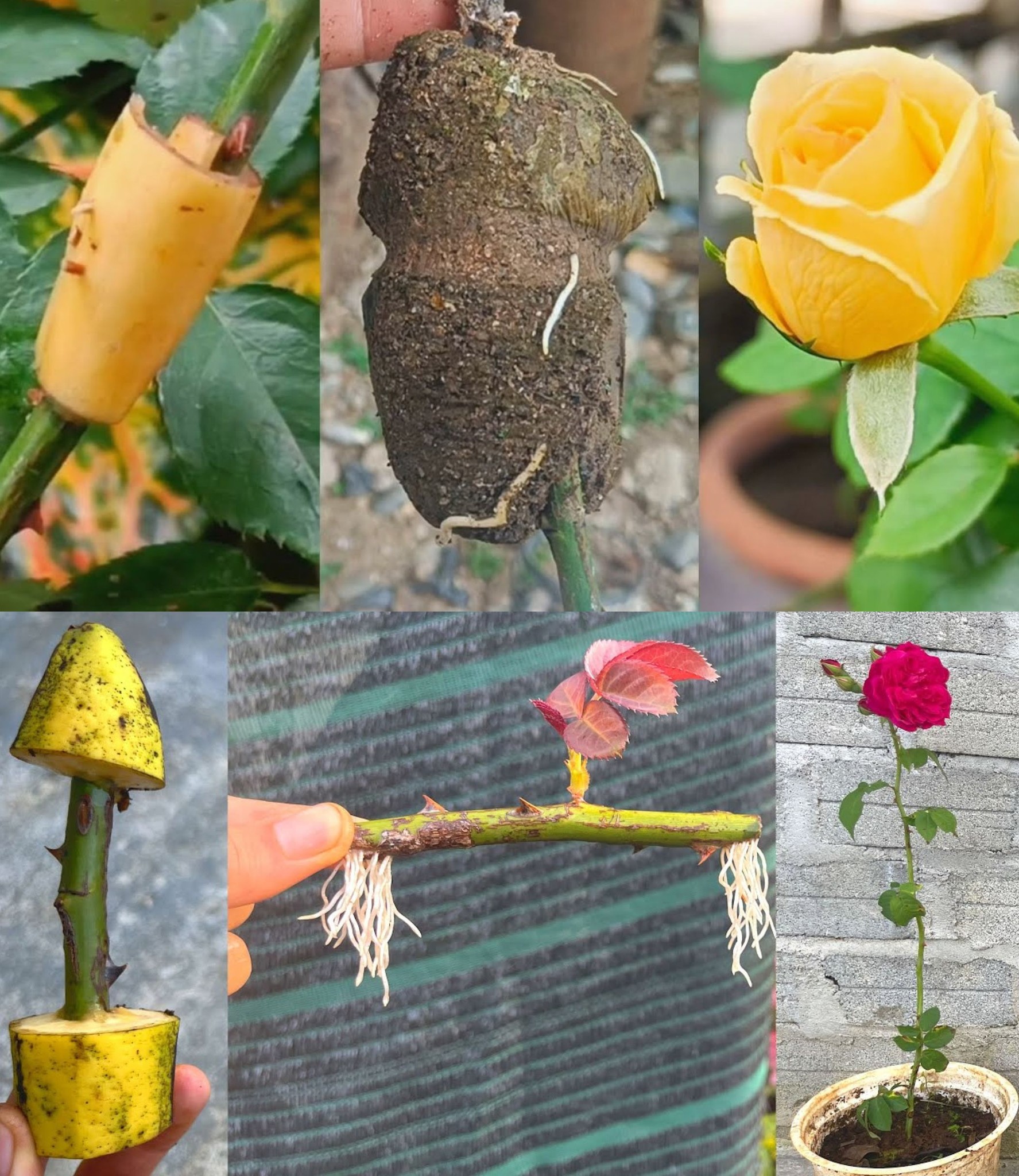
How to propagate roses with banana peels for many roots Growing roses with bananas🌱
While banana peels contain some nutrients that can benefit plants, there is no scientific evidence to support the idea that using banana peels specifically aids in root development when propagating roses. However, banana peels can contribute to the overall health of your plants by providing organic matter and nutrients like potassium, phosphorus, and calcium.
Here’s a general guide on how to propagate roses and use banana peels in a way that supports their growth:
Materials Needed:
- Rose cuttings
- Clean, sharp pruning shears or scissors
- Potting mix or well-draining garden soil
- Rooting hormone (optional)
- Banana peels
- Small pots or containers
- Watering can or hose
- Plastic wrap or a plastic dome (optional)
Steps:
- Selecting Rose Cuttings:
- Choose healthy, disease-free stems for your rose cuttings. Cuttings should be 6 to 8 inches long and have at least two sets of leaves.
- Taking Rose Cuttings:
- Use clean, sharp pruning shears to take cuttings just below a leaf node. Remove any flowers, buds, or leaves from the lower part of the cutting.
- Optional: Apply Rooting Hormone:
- If desired, dip the cut end of each rose cutting in rooting hormone. This can encourage the development of roots.
- Preparing Potting Mix:
- Fill small pots or containers with a well-draining potting mix or garden soil. Make a hole in the soil with a pencil or stick to insert the cutting.
- Inserting Rose Cuttings:
- Insert each rose cutting into the prepared hole in the potting mix. Firm the soil around the cutting to hold it in place.
- Adding Banana Peels:
- Place a small piece of banana peel (about an inch or two in size) near the base of each rose cutting. Banana peels break down slowly and release nutrients over time.
- Watering:
- Water the cuttings thoroughly. Ensure that the soil stays consistently moist, but avoid waterlogging.
- Creating a Humid Environment (Optional):
- If desired, cover the pots with plastic wrap or place them in a plastic dome to create a humid environment. This can help prevent excessive moisture loss from the leaves.
- Position in Indirect Light:
- Place the pots in a location with bright, indirect light. Avoid exposing them to direct sunlight, as it can lead to excessive drying.
- Monitor and Wait:
- Keep an eye on the moisture level in the soil. After some time, you should see new growth, indicating that roots are forming.
- Transplanting:
- Once the cuttings have developed sufficient roots, transplant them into larger pots or into the garden.
Tips for Success:
- Use Healthy Banana Peels: Use banana peels that are free from pesticides. You can chop or break them into smaller pieces for easier incorporation into the soil.
- Provide Adequate Light: Ensure the cuttings receive bright, indirect light during the rooting phase.
- Regular Maintenance: Check the soil moisture regularly and water when needed. Remove any decaying banana peel pieces to prevent mold or pests.
While using banana peels can contribute to nutrient availability, it’s crucial to recognize that the primary factors for successful rose propagation are proper care, good soil, and suitable environmental conditions. Banana peels should be considered a supplementary measure rather than a guarantee for root development. Experimenting with different propagation methods and understanding the needs of your specific rose varieties will contribute to successful propagation.
